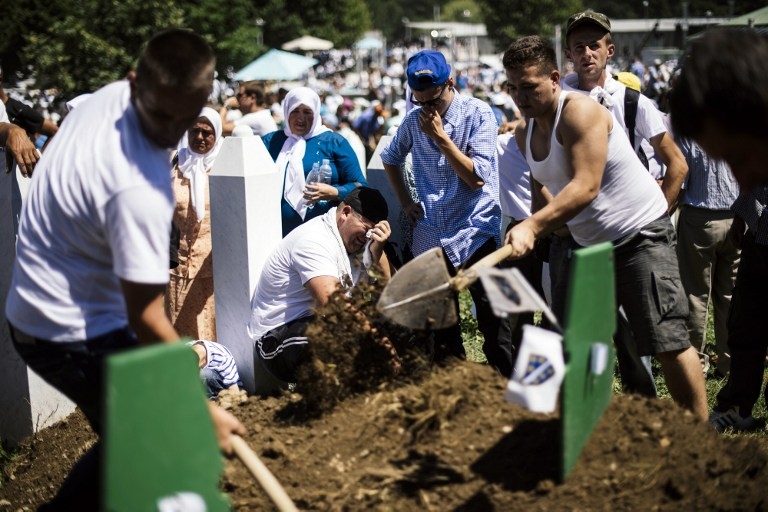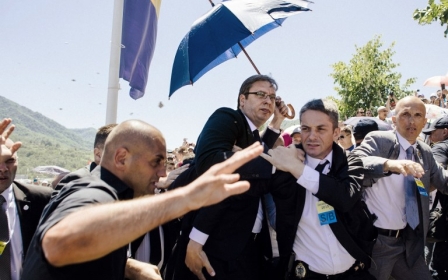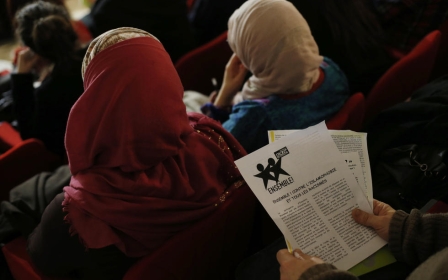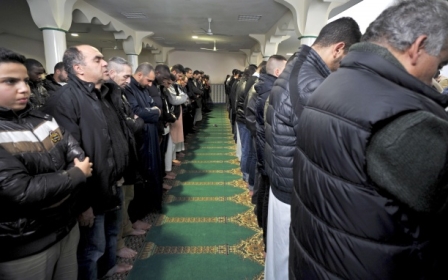The rawness of Srebrenica that remains

With the news of tensions that spiralled out of control at Saturday's commemoration ceremony at Srebrenica, marking 20 years since the massacre of more than 8,000 Bosnia Muslim men and boys at the hands of Bosnian Serb forces, I am reminded of just how raw the Srebrenica genocide remains.
For many outside of Bosnia, the breakup of the former Yugoslavia and the ensuing conflicts which emerged seem like distant history. But though 20 years have passed, bodies continue to be uncovered, not because Bosnian Serb forces have decided to reveal the sites where they dug up and reburied bodies in mass graves, but often because of painstaking forensic work and, frequently, through grizzly discoveries.
Srebrenica was the worst atrocity on European soil since WWII. On 11 July 1995, General Ratko Mladic and his Bosnian Serb forces overran the UN-designated safe zone in the town of Srebrenica and systematically killed the men and boys, while women were shipped out of the town, in act of a ethnic cleansing. Many of the women were tortured and raped.
The International Criminal Tribunal for the former Yugoslavia (ICTY) - and the International Court of Justice – have both called the events “genocide,” a term Serbia has refused to recognise, although it has since condemned the events as a “horrible crime”. Mladic and former Bosnian Serb leader Radovan Karadzic are both on trial at The Hague for crimes relating to the massacre.
In February this year, I travelled with the BBC to make a documentary “A Deadly Warning: Srebrenica Revisited” (BBC1 and on BBC iPlayer) about the impact that learning about the events at Srebrenica would have on young people.
We travelled with a group all born in the same year as the massacre to the site of the genocide. The young people were travelling as part of a delegation organised by “Remembering Srebrenica”, a British organisation which takes delegates to Bosnia-Herzegovina to learn about the tragedy and in return, the individuals pledge to carry out activities related to remembrance in their local communities.
Most of the group had little knowledge about the events at Srebrenica, although some like Jonas, whose family is originally from the Congo, had grown up with an awareness of genocide, with his parents referring to 1994 and 1995 as “the terrible years” in reference to Rwanda and Bosnia. Like Jonas, Hannah had grown up with an awareness of genocide. Her grandmother had escaped the Nazis and she herself had taken part in a two-minute silence to remember the genocide in Bosnia, alongside four other genocides, as part of National Holocaust Memorial Day.
Their stories reminded me of the importance of remembering such tragedies, not least because it seemed that both Jonas and Hannah were particularly attentive to the steps which precede genocide – dehumanisation, prejudice, hate - as a consequence of their personal connection to tragedy.
Others in the group, like Abdul Farooq, were shocked they’d not heard anything about Srebrenica previously. Abdul was acutely sensitive to the fact he felt some deaths accrued more media attention than others, and questioned - as many of the delegates subsequently did also – why the Bosnia genocide wasn’t taught in schools. For him, as it was for Julie Podbielski Stewart, whose father Colonel Bob Stewart was the British commander of UN forces in Bosnia, serious questions were also raised about the role of the UN and the actions – or inaction – of the international community.
As they learnt about the disintegration of a vibrant, multi-ethnic and religiously diverse society, how quickly neighbours turned on neighbours and how small differences became markers of dehumanisation, the group seemed increasingly aware that the delicate balance within a diverse society is itself quite fragile. They perceived that long before mass graves and ethnic cleansing, the hatred and demonisation of the other are important milestones to acknowledge and address. They also began to recognise how easily prejudice can take hold, as Abdul struggled to offer a polite greeting to a Serb official and Jonas discovered the forensic scientist he was speaking to, whose job it is to identify Bosnian Muslim remains, was herself a Serb, having wrongly assumed she must be a Bosnian Muslim.
The funeral service held this Saturday for more than 100 victims whose remains were recently identified is testimony to how raw the Bosnian genocide remains. This isn’t so much history, as present, and while the issue of accountability of the perpetrators and the missing dead remain, not to mention a divisive political legacy within the region, it is hard to imagine how the wounds can ever start to heal.
Remembering Srebrenica – the dead and those still seeking justice – is one important step in marking our shared humanity.
“A Deadly Warning: Srebrenica Revisited” is available on BBC iPlayer.
- Myriam Francois-Cerrah is a Franco-British journalist, broadcaster and writer with a focus on current affairs, France and the Middle East.
The views expressed in this article belong to the author and do not necessarily reflect the editorial policy of Middle East Eye.
Photo: A Bosnian man mourns during the funeral ceremony of his relatives at the Potocari Memorial Center, near the eastern Bosnian town of Srebrenica on 11 July 2015.
New MEE newsletter: Jerusalem Dispatch
Sign up to get the latest insights and analysis on Israel-Palestine, alongside Turkey Unpacked and other MEE newsletters
Middle East Eye delivers independent and unrivalled coverage and analysis of the Middle East, North Africa and beyond. To learn more about republishing this content and the associated fees, please fill out this form. More about MEE can be found here.





